8th Air Force 235 BIG WEEK - DAY 6
25 February 1944
MACR 3829
Object Number - UPL 13393 - B-24H-1-CF, serial number 41-29118
Description
On this final operation of BIG WEEK, Day 6, a combined force of 754 heavy bombers from 1st, 2nd and 3rd Air Divisions are despatched to bomb the German aircraft industries at Regensburg, Augsburg, Stuttgart and Furth, Germany. Mission Summary follows:
3rd Air Division: A combined force of 290 B-17s is despatched from: 94BG; 95BG; 96BG; 100BG; 301 BG; 385BG; 388BG; 390BG; 447BG; and 452BG to bomb the aircraft industries at Regensburg and other Targets of Opportunity (TOs) in that vicinity. 267 aircraft are effective on Regensburg and other TOs. 12 aircraft Failed to Return (FTR) - 32 KIA 73 POW 5 EVD 10 RTD (rescued by ASR). 1 aircraft with battle damage is Damaged Beyond Repair (DBR) in a crash landing upon return - 1 KIA 9 RTD. 82 aircraft are damaged. 4 airmen in returning aircraft are KIA and another 12 are WIA. The bomber gunners of this element claim 13-1-7 of attacking German aircraft. There are no other losses or casualties.
1st Air Division: A combined force of 268 B-17s from: 91BG; 92BG; 303BG; 305BG; 306BG; 351BG; 379BG; 381BG; 384BG; 401BG; 457BG; and 482BG are depatched to bomb the aircraft industries at Augsburg and Stuttgart, Germany. 196 aircraft are effective on Augsburg and 50 are effective at Stuttgart, Germany. 422BS also drops 2,000,000 leaflets on Augsburg, Germany. 13 aircraft Failed to Return (FTR) - 37 KIA 80 POW 4 EVD 10 INT (interned in Switzerland). 172 aircraft are damaged. 12 airmen in returning aircraft are WIA. The bomber gunners of this element claim 8-4-4 of attacking German aircraft. There are no other losses or casualties.
2nd Air Division: A combined force of 196 B-24s from : 44BG; 93BG; 389BG; 392BG; 445BG; 446BG; 448BG; and 453BG are despatched to bomb the German aircraft industries at Furth, Germany. 172 aircraft are effective on the target. 6 aircraft Failed to Return (FTR) - 24 KIA 37 POW. 3 aircraft are Damaged Beyond Repair (DBR) in crash landings back in England - 30 RTD. 44 aircraft are damaged. 2 airmen in returning aircraft are WIA. The bomber gunners of this element claim 2-2-2 of attacking German aircraft. There are no other losses or casualties.
Mission Details
Description: BOMB TARGETS OF OPPORTUNITY
Aircraft Type: B-24 Liberator
Notes: It has not been determined which 2nd Bomb Division Groups attacked this target.
Mission Statistics
- Tonnage Dropped: 27.05
- Aircraft sent: 11
- Aircraft effective: 11
Description: BOMB TARGETS OF OPPORTUNITY
Aircraft Type: B-17 Flying Fortress
Notes: It has not been determined which 1st Bomb Division aircraft attacked this target.
Mission Statistics
- Tonnage Dropped: 2.25
- Aircraft sent: 1
- Aircraft effective: 1
Description: BOMB TARGETS OF OPPORTUNITY
Aircraft Type: B-17 Flying Fortress
Notes: It has not been determined which 3rd Bomb Division aircraft attacked this target.
Mission Statistics
- Tonnage Dropped: 2.41
- Aircraft sent: 1
- Aircraft effective: 1
AUGSBURG (Primary)
Description: AIRCRAFT FACTORIES
Aircraft Type: B-17 Flying Fortress
Notes: This three-part operation is the culmination of "BIG WEEK." During the six days that BIG WEEK was conducted over 10,000 tons of bombs were dropped by the 8th and 15th Air Forces on eighteen German airframe and ball bearing manufacturing centres including Regensburg and Schweinfurt. This is nearly the tonnage dropped by the 8th Air Force in the first year of the war. The RAF dropped even more. While the raids were celebrated as very successful at the time, after the war it was learned that the damage had only resulted in a two-month delay in fighter production. The second major objective of BIG WEEK, the destruction of the Luftwaffe, was more successful. The Germans lost over one-third of their single engine fighters, but even more devastating to the Luftwaffe was the loss of 18 percent of its experienced fighter pilots. 457th BG MISSION NO. 4 - AUGSBURG, GERMANY 25 FEBRUARY 1944 The Eighth Air Force penetrated in south Germany to attack three aircraft plants and production centers, and a ball bearing plant at Stuttgart. Augsburg, the 457th’s assigned target, was the site of the production of Me-210 jet planes. The Germans were busy producing there an aircraft, unknown to aerial warfare at the time, that would be faster and capable of producing more firepower than any other fighter plane then in service. The Group comprised the 94th Combat Wing’s low box. In addition, the Group provided six planes for the low squadron of the high box. Col. Luper was Air Commander and Lt. Donald E. Lady was pilot. Enemy opposition was heavy. The Group attacked the primaiy target with good results. For the Eighth Air Force the mission was another costly one, thirty-one aircraft lost to enemy forces. Just inside the French Coast on the way to the target, flak knocked out an engine on Lt. Edward J. Reppa’s craft, but he continued toward the target. Lt. James R. Chinn was shot down by enemy fighters and crashed in France. Two of his crew evaded capture and later returned to England. Lt. Chinn did not survive. Seven crew members lost their lives. Lt. Archie F. Bowers’ ship was hit by flak in the target area, dropped out of formation and was attacked by enemy fighters. Six crew members were killed in action. On the way back to England, Lt. Reppa lost another engine and ultimately crash landed at another base in England without any brakes to stop the craft, which finally came to a stop at a deep ditch after first hitting a tree. There were no serious injuries in the crew. The plane did not fare as well. It had come to its final resting place. Lt. Green B. Poore, badly shot up, landed at another base with little gasoline remaining. Lt. Robert D. Lane landed with two engines out. Lt. Clarence E. Schuchmann lost three engines, and in making a down wind landing, with another craft landing from the opposite direction, lost the fourth engine and made a dead stick landing. The other craft made a touch-and-go landing, avoiding a collision. Twenty-three, of the twenty-four aircraft completing the mission, suffered battle damage. Though not directly attacked by the “Abbeville Kids”, the Group got their first glimpse of the highly trained Me-109 Squadron with the yellow noses. In summary the first week in combat had been rough. If there were any doubts of what lay ahead for the Group, the format was on the map in the briefing room. The Eighth Bomber Command had identified strategic and tactical targets in all parts of The Third Reich.

- Unit Hierarchy: Group
- Air Force: Eighth Air Force
- Type Category: Bombardment

- Unit Hierarchy: Group
- Air Force: Eighth Air Force
- Type Category: Bombardment

- Unit Hierarchy: Group
- Air Force: Eighth Air Force
- Type Category: Bombardment

- Unit Hierarchy: Group
- Air Force: Eighth Air Force
- Type Category: Bombardment
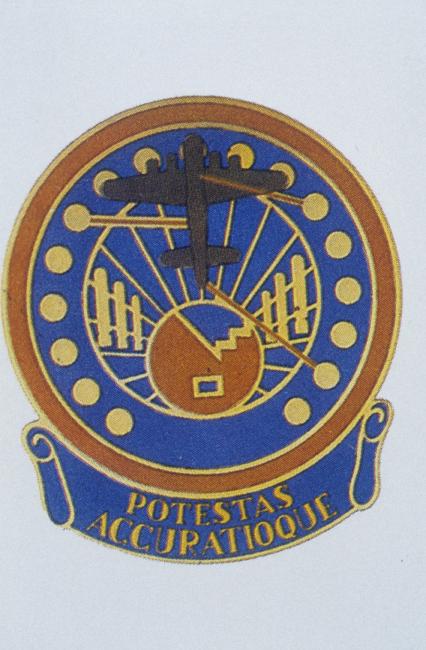
- Unit Hierarchy: Group
- Air Force: Eighth Air Force
- Type Category: Bombardment
Mission Statistics
- Tonnage Dropped: 438.75
- People killed in action: 37
- People wounded in action: 12
- People evaded: 4
- Prisoners of war: 70
- People interned: 10
- People returned to duty: 20
- Enemy aircrafts destroyed by bomber: 8
- Enemy aircrafts probably destroyed by bomber: 4
- Enemy aircraft damaged by bomber: 4
- Aircraft sent: 217
- Aircraft effective: 195
- Aircraft missing in action: 12
- Aircraft damaged beyond repair: 2
- Aircraft damaged: 172
Fürth, Germany
Description: AIRCRAFT FACTORIES
Aircraft Type: B-24 Liberator
Notes: The aircraft manufacturing factories at Furth, Germany are the primary target for 3rd Bomb Division Groups.

- Unit Hierarchy: Group
- Air Force: Eighth Air Force
- Type Category: Bombardment

- Unit Hierarchy: Group
- Air Force: Eighth Air Force
- Type Category: Bombardment
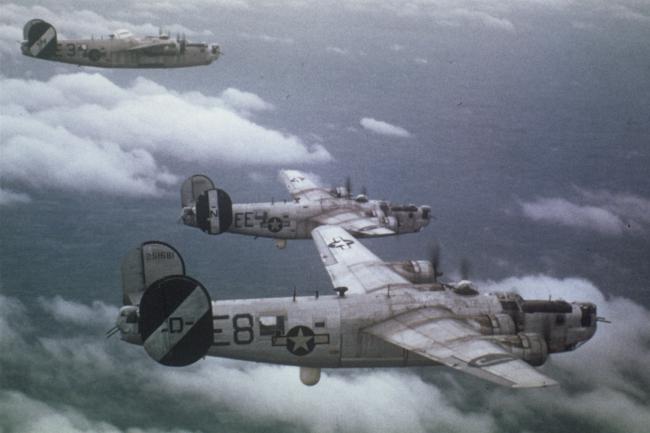
- Unit Hierarchy: Group
- Air Force: Eighth Air Force
- Type Category: Bombardment

- Unit Hierarchy: Group
- Air Force: Eighth Air Force
- Type Category: Bombardment

- Unit Hierarchy: Group
- Air Force: Eighth Air Force
- Type Category: Bombardment
Mission Statistics
- Tonnage Dropped: 422.95
- People killed in action: 24
- People wounded in action: 2
- Prisoners of war: 37
- People returned to duty: 30
- Enemy aircrafts destroyed by bomber: 2
- Enemy aircrafts probably destroyed by bomber: 2
- Enemy aircraft damaged by bomber: 2
- Aircraft sent: 185
- Aircraft effective: 172
- Aircraft missing in action: 6
- Aircraft damaged beyond repair: 2
- Aircraft damaged: 44
REGENSBURG (Primary)
Description: AIRCRAFT FACTORIES
Aircraft Type: B-17 Flying Fortress
Notes: The aircraft assembly factories at Regensburg, Germany are the primary target for 3rd Bomb Division Groups.
![Three airmen of the 100th Bomb Group, Lieutenant Kenneth Menzie, Lieutenant Donald Strout and Lieutenant Norman Scott, plan the route they will take during the next mission in their B-17 Flying Fortress (serial number 42-30380). Image stamped on reverse: 'Reviewed and passed U.S. Army 23 Aug 1943 Press Censor E.T.O. U.S.A.' [stamp]'. Passed for publication 23 August 1943 INTLD 16 General Section Press Censorship Bureau '[stamp], 'Associated Press' [stamp] and '280035.' [Censor no.] Printed caption on reve](https://assets.americanairmuseum.com/s3fs-public/styles/max_650x650/public/freeman/media-378743.jpg?itok=oPPVVi6c)
- Unit Hierarchy: Group
- Air Force: Eighth Air Force
- Type Category: Bombardment

- Unit Hierarchy: Group
- Air Force: Eighth Air Force
- Type Category: Bombardment
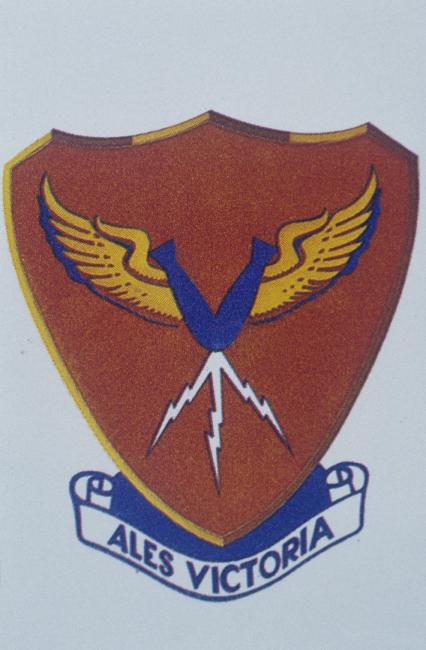
- Unit Hierarchy: Group
- Air Force: Eighth Air Force
- Type Category: Bombardment
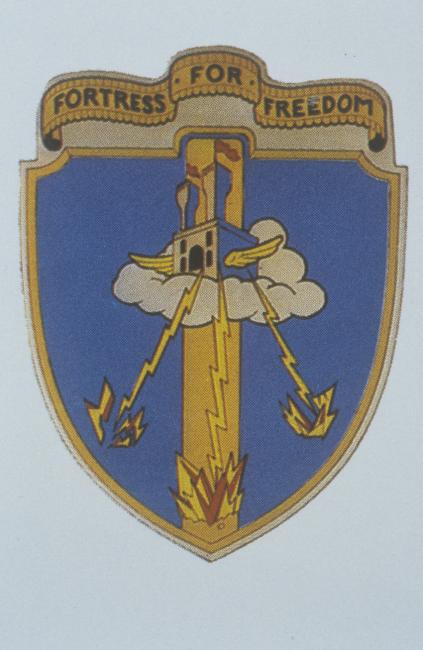
- Unit Hierarchy: Group
- Air Force: Eighth Air Force
- Type Category: Bombardment

- Unit Hierarchy: Group
- Air Force: Eighth Air Force
- Type Category: Bombardment
Mission Statistics
- Tonnage Dropped: 641.09
- People killed in action: 37
- People wounded in action: 12
- People evaded: 5
- Prisoners of war: 73
- People returned to duty: 19
- Enemy aircrafts destroyed by bomber: 13
- Enemy aircrafts probably destroyed by bomber: 1
- Enemy aircraft damaged by bomber: 7
- Aircraft sent: 289
- Aircraft effective: 266
- Aircraft missing in action: 12
- Aircraft damaged beyond repair: 1
- Aircraft damaged: 82
STUTTGART (Primary)
Description: INDUSTRIAL AREA
Aircraft Type: B-17 Flying Fortress
Notes: It has not been determined which 1st Bomb Division Groups attacked this target.
Mission Statistics
- Tonnage Dropped: 168.00
- Prisoners of war: 10
- Aircraft sent: 50
- Aircraft effective: 50
- Aircraft missing in action: 1
Connections
See how this entry relates to other items in the archive by exploring the connections below.
People

- Military/Civilian/Mascot: Military
- Nationality: American
- Unit: 447th Bomb Group 711th Bomb Squadron
- Service Numbers: O-802686
- Highest Rank: Second Lieutenant
- Role/Job: Pilot
- Military/Civilian/Mascot: Military
- Nationality: American
- Unit: 384th Bomb Group 544th Bomb Squadron
- Service Numbers: O-798297
- Highest Rank: First Lieutenant
- Role/Job: Pilot
- Military/Civilian/Mascot: Military
- Nationality: American
- Unit: 384th Bomb Group 547th Bomb Squadron
- Service Numbers: 16006483
- Highest Rank: Technical Sergeant
- Role/Job: Top Turret Gunner
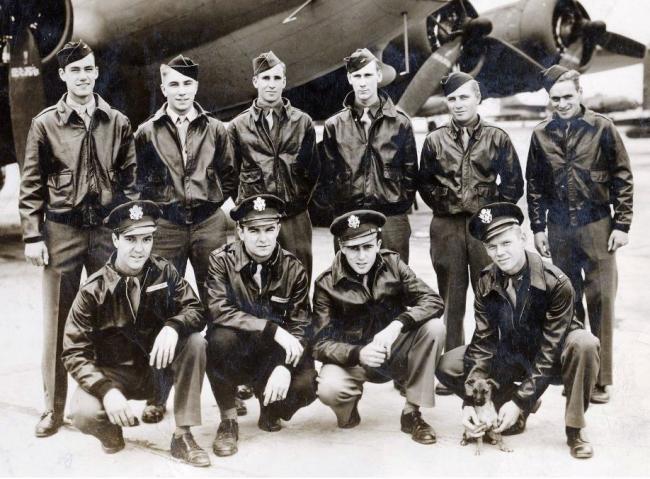
- Military/Civilian/Mascot: Military
- Nationality: American
- Unit: 95th Bomb Group 412th Bomb Squadron
- Service Numbers: 18193418
- Highest Rank: Technical Sergeant
- Role/Job: Radio Operator
- Military/Civilian/Mascot: Military
- Nationality: American
- Unit: 95th Bomb Group 336th Bomb Squadron
- Service Numbers: 32549894
- Highest Rank: Technical Sergeant (2nd Grade)
- Role/Job: Radio Operator
Aircraft

- Aircraft Type: B-17 Flying Fortress
- Nicknames: Little Audrey
- Unit: 306th Bomb Group 384th Bomb Group Base Air Depot 1 368th Bomb Squadron 544th Bomb Squadron

- Aircraft Type: B-17 Flying Fortress
- Nicknames: The Duchess, Sure Stuff
- Unit: 303rd Bomb Group 359th Bomb Squadron

- Aircraft Type: B-17 Flying Fortress
- Nicknames: Problem Child : Old Reliable
- Unit: Base Air Depot 1 547th Bomb Squadron 384th Bomb Group 305th Bomb Group 367th Bomb Squadron

- Aircraft Type: B-17 Flying Fortress
- Nicknames: Knock-out Dropper
- Unit: 303rd Bomb Group 359th Bomb Squadron

- Aircraft Type: B-24 Liberator
- Nicknames: - Little Sheppard
- Unit: 448th Bomb Group 712th Bomb Squadron
Revisions
Added some punctuation in the "Mission Narrative" to aid readability.
711th Bombardment Squadron (H), 447th Bombardment Group (H)
B-17-G #42-39882, “My Gal” Crew
Top Left to Right: August E. Herlth, Eugene G. D'Albero, Larry S. Hatfield, Martin J. Gruber
Bottom Left to Right: William M. Lindgren, Bailey E. Swadley, Raymond L. Hayes, William H. Stoyer, Rocco J. LoCarro, Louis L. Jenkins
Lee Cunningham 11-Feb-2016. Added bomber gunner claims on enemy aircraft to Furth element statistics per "the Mighty Eighth War Dairy", Roger A. Freeman.
Lee Cunningham 11-Feb-2016. Added bomber gunner claims on enemy aircraft to Regensburg element statistics per "the Mighty Eighth War Diary", Roger A. Freeman.
Lee Cunningham 11-Feb-2016. Added bomber gunner claims on enemy aircraft to Augsburg element statistics per "The Mighty Eighth War Diary", Roger A. Freeman.
Lee Cunningham 11-Feb-2016. Made connection to aircraft type in Mission #1 event.
Lee Cunningham 11-Feb-2016. Added Mission Narrative based on "The Mighty Eighth War Diary", Roger A. Freeman. Losses confimred from MACRS and "Losses of the 8th & 9th Air Forces", Stan Bishop & John A Hey MBE.
Mission detail added courtesy of Diane Reese - http://www.457thbombgroup.org/Narratives/MA4.html
Lee Cunningham, 8th Air Force missions research database / Stan Bishop's 'Losses of the US 8th and 9th Air Forces', the Combat Chronology of the US Army Air Forces and the work of Roger Freeman including the 'Mighty Eighth War Diary'.

